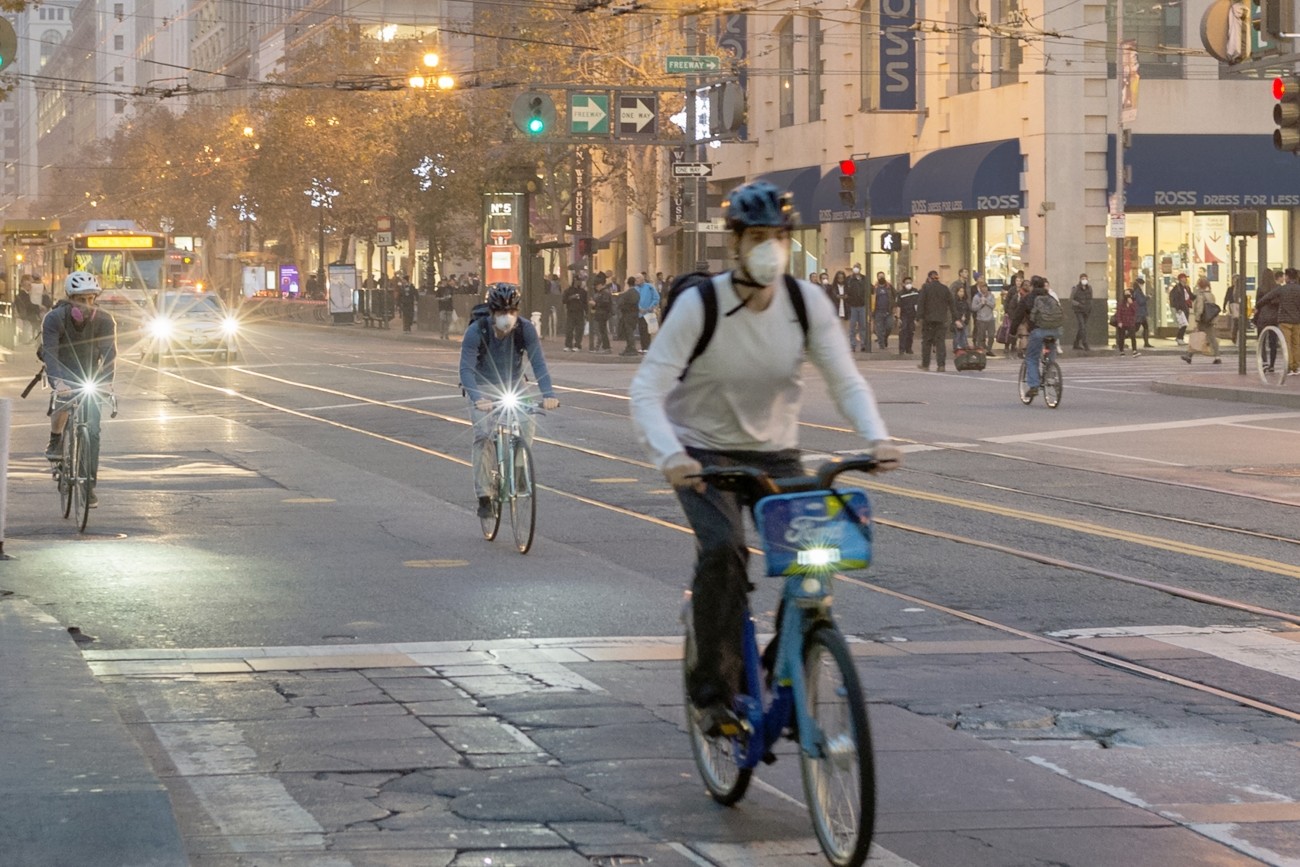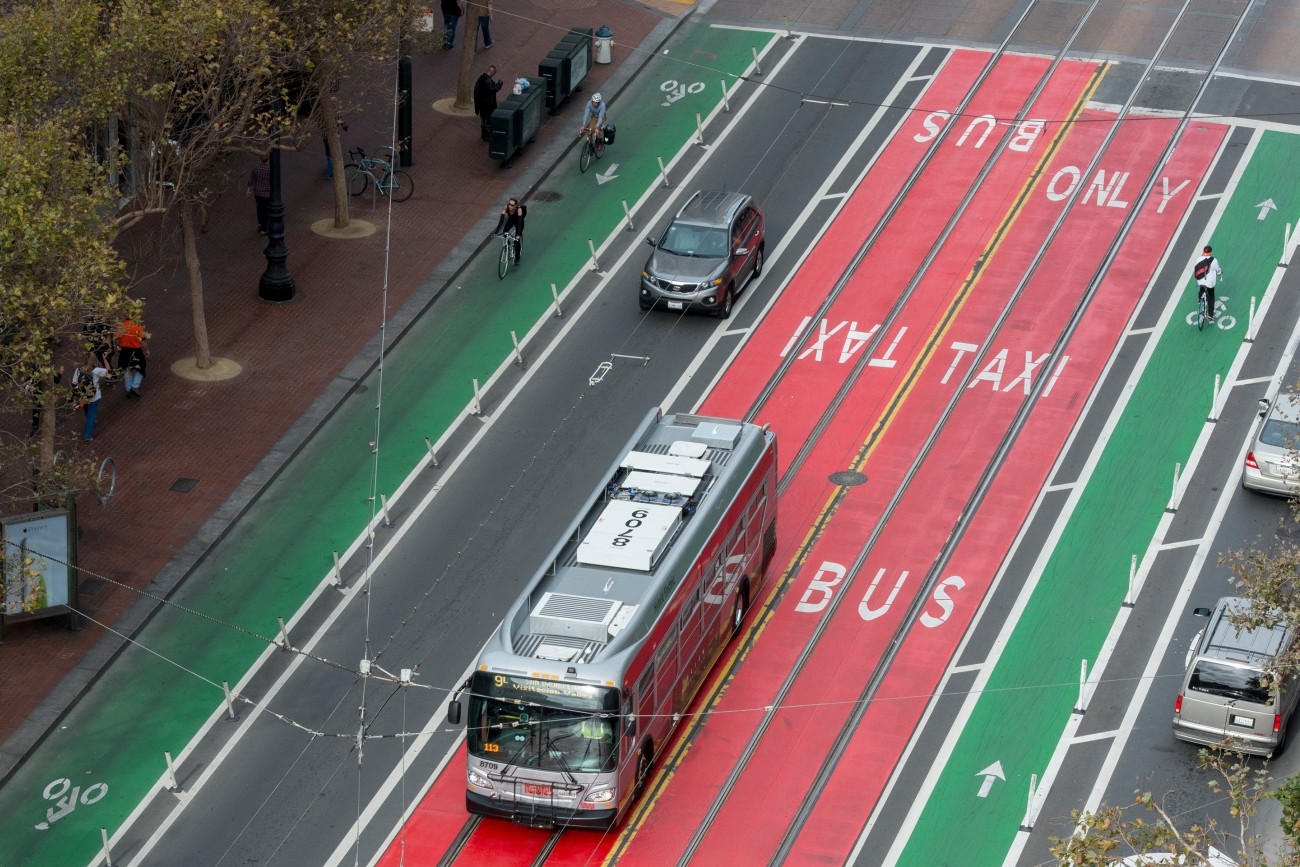
Photo by SFMTA Photography Department
The Transportation Authority Board recently approved over $43 million in Prop L half-cent sales tax funds to replace over 100 hybrid and battery-electric Muni buses that have reached the end of their useful lives. Replacing vehicles at the end of their useful life will keep the average fleet age down, which increases reliability of Muni service.
The Innovative Clean Transit regulation requires all public transit agencies in the state to transition from internal combustion engine buses to zero-emission buses, such as battery-electric or fuel cell electric, by 2040. This supports the City’s Climate Action Strategy goals and the voter-approved Transit-First Policy.
Benefits of Battery-Electric Buses
Environmental benefits
- Battery-electric buses generate zero greenhouse gas emissions because they are powered by a battery in their operating system rather than fuel.
- Like our other zero-emission vehicles, the battery-electric buses will run on 100% greenhouse gas-free Hetch Hetchy hydroelectric power.
- Battery-electric buses don’t produce harmful exhaust that reduces air quality.
Service improvement features
- Battery-electric buses are easier and less expensive to maintain, allowing SFMTA to dedicate more resources to serving passengers.
- Battery-electric buses have significantly reduced noise levels, making them more pleasant for riders and pedestrians.
The new buses are expected to be delivered to SFMTA by 2026.
Watch the presentation from the June 11 Transportation Authority Board Meeting to learn more.
Resources
Battery-Electric Bus Program (SFMTA)

